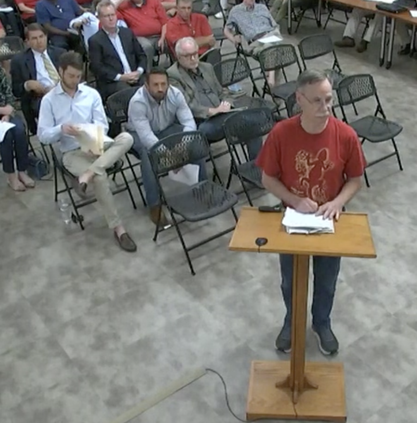COVINGTON, Ga. — Covington City Council will allow developers to offer only one-third of homes for rent in new subdivisions under an ordinance approved Monday night.
Council members also voted to deny a request for a rezoning that would have allowed construction of a single-family subdivision with 113 homes planned entirely for rent on McGuirts Bridge Road on the city’s eastern edge.
The rezoning was requested by former Covington mayor Ronnie Johnston and McGinnis Ferry Development Group on a 39-acre tract.
Johnston requested a rezoning from the Neighborhood Residential District 1 (NR-1) classification to the NR-2 classification which allows more dense development.
Planning Director Marc Beechuk said access to the site “is an issue” because of the lack of a traffic signal at the only access point to the proposed subdivision on McGuirts Bridge Road and U.S. Hwy. 278.
Council members said they had concerns about the effect of anticipated heavy traffic from the new subdivision when combined with existing traffic on narrow, two-lane McGuirts Bridge Road.
Developers, however, said they would work with transportation officials to build turn lanes off Hwy. 278 and install a traffic signal at McGuirts Bridge Road.
They said rents would range between $2,200 and $2,400 and be a mix of two-, three- and four-bedroom homes.
The undeveloped, mostly wooded site is adjacent to the Eastside Trail and the Wildwood and Neely Farms developments which are already zoned for NR-2.
It is also adjacent to the decades-old Fairfield neighborhood outside the Covington city limits with lots that average about two acres each.
The overall density of the new subdivision would average 3.5 units per acre — much lower than the maximum 12 units allowed in the NR-2 zone, developers said. However, the homes would sit on 50-foot-wide lots of about 12,000 square feet each and surround undeveloped areas that include a lake and buffer area.
One Fairfield resident, Chris Martin, said the property would not “match well” with his community characterized by two-acre lots.
“This is a high-density, build to rent neighborhood that has a potential to harm our neighborhood,” he said. “Don’t put something like that in the middle of a nice, quiet neighborhood.”
Martin said he also was concerned about the potential for increased crime from construction of a rental-only development.
He also quoted studies he said showed homeowners were more involved in their communities and remained in their homes four times longer than renters.
Councilman Anthony Henderson, who rents his home, said the information Martin provided about renters’ community involvement was not accurate.
“Because I rent doesn’t mean I don’t have value,” he said.
Councilwoman Susie Keck said many younger residents have limited free time and prefer a rental company’s maintenance staff to maintain their homes.
“We have a lot making $500,000 who don’t want to own,” she said.
Johnston said he has owned the 33-acre tract since 2014 and had several offers over the years to sell it. However, he said the McGinnis Ferry developer planned a subdivision that would be maintained well and not allowed to fall into disrepair.
In a related action, council members voted 4-2 to create a rental subdivision category in the zoning ordinance and a 32% cap on the number of homes strictly built for rental in a new single-family subdivision.
It also required developers to include an on-site maintenance office in an effort to keep the rental homes from falling into disrepair and becoming unsightly.
The ordinance also requires 10% of the site — or a minimum of 3,000 square feet — to be reserved as a common area that includes parks or trails placed within 1,000 feet of all homes, Beechuk said.
The subdivisions, defined as “for-rent, single-family detached developments,” are intended to be a transitional use between owner-occupied residential areas and commercial zones, Beechuk said.
Keck said she opposed limiting the number of rental homes because it would stop developers from any construction. Most new single-family subdivisions offering rental homes are planned for 100% of the houses to be rentals, she said.
The council voted 4-2 for the ordinance, with council members Fleeta Baggett, Don Floyd, Charika Davis and Kenneth Morgan in favor and Keck and Henderson voting against.
The ordinance likely would have affected the McGuirts Bridge Road development because it was approved prior to the public hearing on the rezoning request, said City Attorney Frank Turner Jr.
It took effect upon approval. However, if a preliminary subdivision plat was approved prior to Monday night — with a final plat approved within one year of the preliminary plat — that subdivision would not be subject to the ordinance, officials said.





